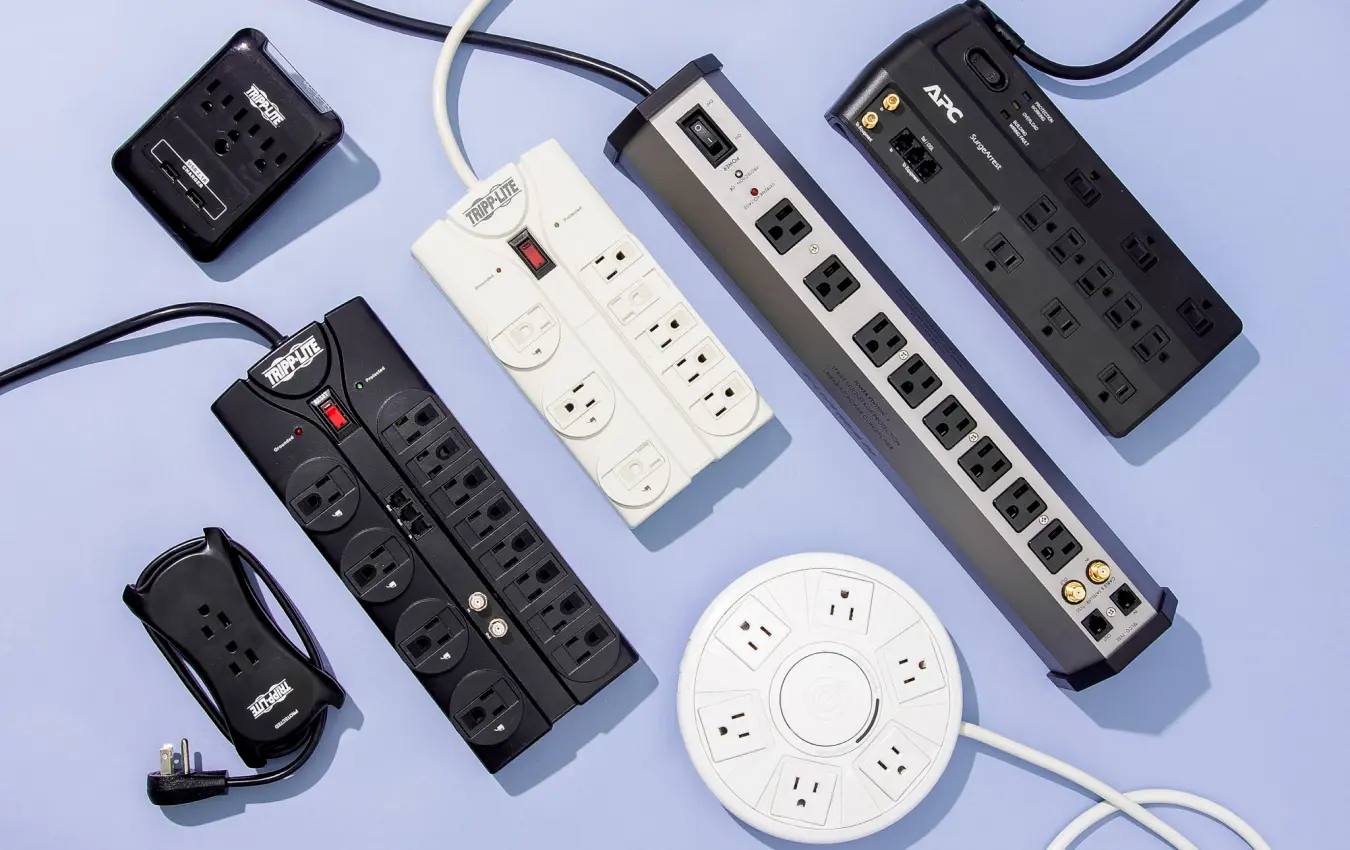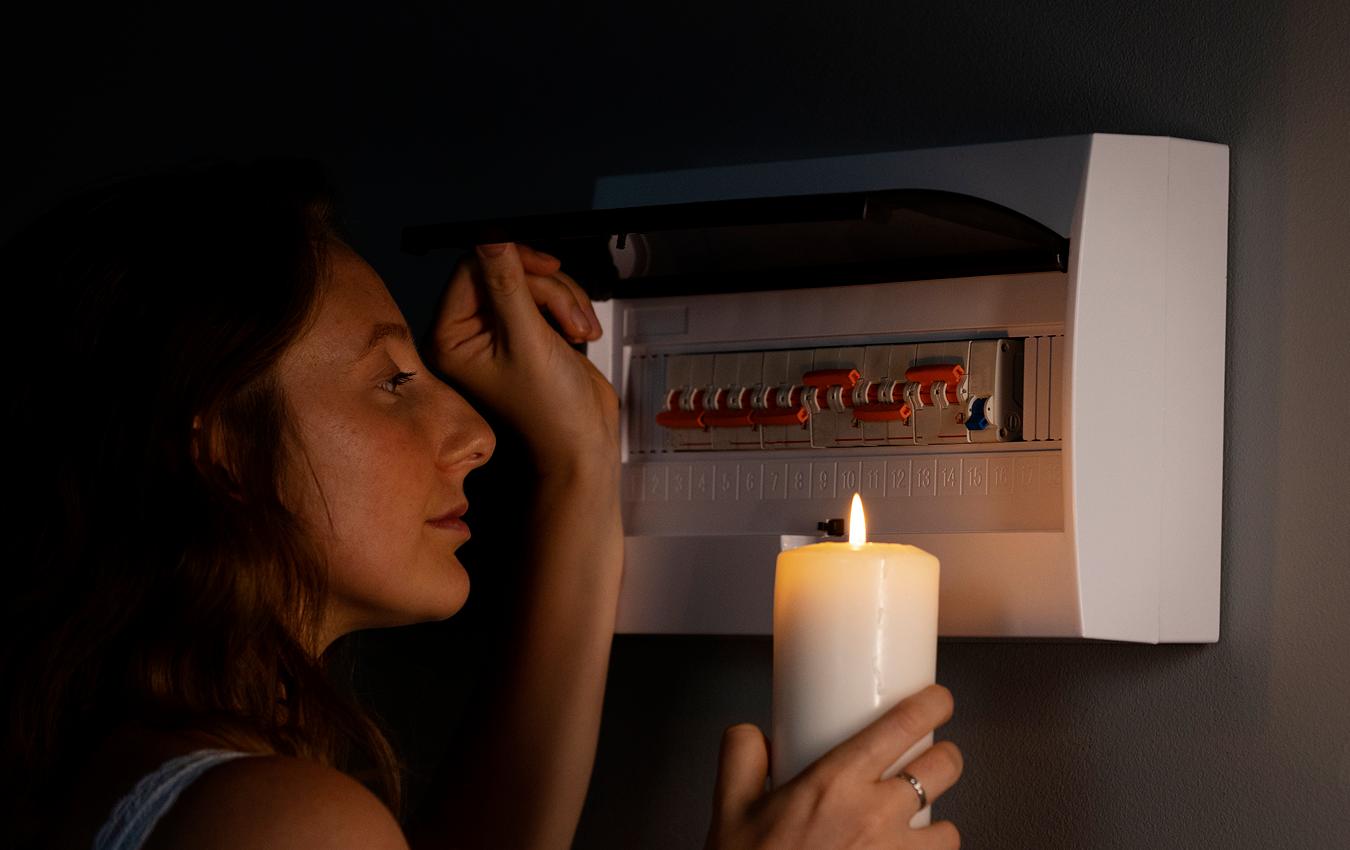Our homes and offices are filled with electronic devices that are essential for work, entertainment, and communication. From computers and televisions to smartphones and appliances, these devices have become integral parts of our lives. However, these valuable electronics are vulnerable to a hidden threat: power surges. These sudden jolts of electricity can occur unexpectedly, causing irreparable damage to your devices and leading to costly repairs or replacements. That’s where surge protectors for home come in.
Surge protectors for home are a crucial line of defense against power surges, safeguarding your electronics from potentially devastating voltage spikes. But with so many different types of surge protectors available, it can be challenging to know which one is right for your needs. This comprehensive guide will delve into the world of surge protectors, exploring the various types, their key features, and how to choose the best one to keep your electronics safe and sound.
What is a Surge Protector?
Electronic devices are designed to operate within a specific voltage range. Voltage is the electrical pressure that pushes electricity through a circuit. When the voltage exceeds this range due to a power surge or spike, it can damage sensitive components and even cause the device to fail.
A surge is a prolonged increase in voltage, lasting for three nanoseconds or more. Spikes, on the other hand, are short bursts of energy that last for a fraction of a second. Surges are generally more damaging due to their longer duration.
A surge protector, also known as a surge suppressor or surge diverter, is a device designed to protect your electronic devices from voltage surges and spikes. It works by diverting this excess voltage to the ground, ensuring that the voltage reaching your devices stays within the safe operating range.
Types of Surge Protectors
Surge protectors come in various forms, each designed for specific applications and levels of protection. Understanding these different types is crucial in selecting the right surge protector for your specific needs.
Type1 Surge Protection Device
This type of surge protector, also known as a service entrance surge arrestor, is installed at the service entrance or main distribution panel of a building. It provides the first line of defense against high-impact power surges, including those caused by direct lightning strikes. These devices have a high surge current capacity and are typically found in commercial and industrial settings, as well as in homes where the risk of damage from power surges is high.
Type 2 Surge Protection Device
Installed further down the electrical system, usually at sub-distribution boards or in consumer units, Type 2 surge protectors offer a second layer of defense against power surges. They protect against secondary effects of power surges and smaller surges that may pass through the Type 1 device. Type 2 devices are commonly used in commercial and residential buildings.
Type 3 Surge Protection Device
Often referred to as point-of-use surge protectors, these are the most common type found in homes. They are installed near electronic devices and plugged into power outlets. Type 3 devices offer protection against smaller surges and spikes that may affect individual devices. It’s important to note that Type 3 devices should only be installed as a supplement to Type 2 devices.
Surge Protector Power Strip
This is the most recognizable type of surge protector, resembling a power strip with multiple outlets. It offers a convenient way to protect multiple devices at once. Some surge protector power strips also include features like USB charging ports, coaxial protection, and telephone line protection.
Wall-Mount Surge Protectors
These surge protectors plug directly into a wall outlet and typically have two to six outlets. They are ideal for situations where space is limited or when you only need to protect a few devices. Some models are designed to be portable, with a folding wall plug for easy travel.
Whole-House Surge Protectors
Installed at your home’s main electrical panel, a whole-house surge protector provides comprehensive protection for all devices connected to the electrical system. It safeguards against external surges caused by lightning strikes, downed power lines, and grid malfunctions. Some whole-house surge protectors also offer protection against internal surges generated by appliances within the home.
Energy-Saving Surge Protectors
These smart surge protectors not only protect your devices but also help save energy by automatically turning off power to devices that are not in use. This feature can be particularly useful for devices that consume power even when turned off, such as phone chargers and televisions.
Levels of Protection: Joule Rating
One of the most important factors to consider when choosing a surge protector is its joule rating. The joule rating indicates how much energy the surge protector can absorb before it fails. The higher the joule rating, the more protection it offers. When protecting multiple devices, a higher joule rating is necessary to handle potential surges impacting multiple devices simultaneously.
For basic protection of small electronics and appliances like lamps, clocks, and phone chargers, a joule rating of up to 1,000 is sufficient. For standard protection in most home and office environments, protecting devices like computers, printers, and routers, a joule rating between 1,000 and 2,000 is recommended. For enhanced protection of high-value and sensitive electronics like gaming consoles, home theater systems, and computers with critical data, a joule rating of 2,000 or above is necessary.
Key Features of Surge Protectors
Besides the joule rating, several other features can enhance the protection and functionality of a surge protector.
Clamping Voltage
This refers to the voltage level at which the surge protector starts to divert excess power to the ground. A lower clamping voltage means the surge protector reacts faster to voltage increases, providing better protection for your devices.
Number of Outlets
Choose a surge protector with enough outlets to accommodate all the devices you need to protect. Consider models with widely spaced outlets to accommodate bulky plugs without blocking adjacent outlets.
USB Ports
Many surge protectors now include USB ports for charging smartphones, tablets, and other devices. This eliminates the need for separate USB chargers and provides a convenient way to charge your devices while protecting them from power surges.
Coaxial and Telephone Line Protection
Some surge protectors offer protection for coaxial and telephone lines, safeguarding devices like cable boxes, modems, and fax machines from surges that can travel through these lines.
EMI/RFI Noise Filtering
This feature helps reduce electromagnetic and radio frequency interference, which can cause data errors and affect the performance of electronic devices.
Indicator Lights
Look for surge protectors with indicator lights that show whether the protection is active and if the device is properly grounded. These lights provide a visual confirmation that the surge protector is functioning correctly and your devices are protected.
Safety Features
Some surge protectors include safety features like safety covers for unused outlets, overload protection, and automatic shut-off in case of a catastrophic surge. These features provide an extra layer of safety, preventing accidents and ensuring the longevity of the surge protector.
Identifying High-Quality Surge Protectors
High-quality surge protectors often share these characteristics: a large protection flow, extremely low residual pressure, and fast response time. They also incorporate the latest arc extinguishing technology to prevent fires, temperature control protection circuit, and built-in thermal protection. A power status indicator to show the working status and a strict structure for stable and reliable operation are also essential features of high-quality surge protectors.
In addition, high-quality surge protectors will actively cut off the power supply if they lose protection function, reminding you to replace them. This ensures that your devices are always protected, even if the surge protector has reached the end of its lifespan.
Applications for Different Surge Protectors
Different types of surge protectors are suited for various applications. For general home use, outlet surge protectors in the form of power strips and wall-mount surge protectors are sufficient for protecting everyday electronics like televisions, computers, and gaming consoles. Whole-house surge protectors offer more comprehensive protection for the entire electrical system.
In specific rooms, such as the kitchen, use surge protectors with widely spaced outlets to accommodate bulky plugs from appliances like refrigerators and microwaves. In the living room, consider surge protectors with coaxial protection for cable boxes and gaming consoles. For a home office, choose surge protectors with multiple outlets, USB ports, and potentially Ethernet protection for computers, printers, and other office equipment.
For specific devices, such as refrigerators, use a robust two-outlet surge protector. For TVs, choose an audio/video surge protector with a high joule rating. A standard surge protector with a joule rating of at least 1000 is recommended for computers. For gaming PCs/consoles, opt for a premium surge protector with a high joule rating and EMI/RFI noise filtering.
In an office setting, surge protectors with multiple outlets and USB ports are essential for protecting computers, printers, and other office equipment. Surge protectors with a joule rating between 1,000 and 2,000 can also be used to protect power tools.
Installing a Whole-House Surge Protector
It’s important to note that in many jurisdictions, including the state of Florida, DIY electrical work is prohibited. This means that unless you’re a licensed electrician, you cannot legally install a whole-house surge protector yourself. Attempting to do so could result in fines or even legal penalties. Even if DIY electrical work is permitted in your area, it’s still highly recommended to consult an electric repair company for the installation of a whole-house surge protector. They have the knowledge and expertise to ensure the surge protector is installed correctly and safely, and they can also advise you on the best type of surge protector for your home’s specific needs.
Conclusion
Surge protectors are essential devices for protecting your valuable electronics from the damaging effects of power surges. By understanding the different types of surge protectors, their features, and their applications, you can make an informed decision and choose the right one for your needs. Remember to consider the joule rating, clamping voltage, number of outlets, and other features when making your selection. With the right surge protector in place, you can have confidence that your devices are safe from potential damage, ensuring their longevity and optimal performance. Don’t wait for a power surge to damage your electronics – invest in a surge protector today!
Premier Electrical Services, a Fort Lauderdale electric repair company, offers professional whole-house surge protector installation services in Broward County and the Boca Raton area of Palm Beach. Our experienced electricians will ensure your surge protector is installed correctly and safely, in compliance with all local regulations. Contact us at 954-900-1696 today for a free estimate and assessment – we’ll be happy to provide you with a detailed quote and answer any questions you may have. Don’t risk DIY electrical work – trust the experts at Premier Electrical Services to protect your home and your valuable electronics.
Key Takeaways
- A surge protector safeguards your electronics from voltage spikes that can occur from various sources, including lightning strikes and faulty wiring.
- Different types of surge protectors exist, each with varying levels of protection and features, so choose one that suits your specific needs and the value of your equipment.
- When it comes to whole-house surge protector installation, professional installation is crucial for safety and compliance with local regulations, especially in Florida where DIY electrical work is prohibited.
Check out the latest news:
- Commercial Energy Audit: Spotting the Sources of Energy Waste
- Protect Your Fort Lauderdale Home with Whole-House Surge Protection
- Power Outages in Fort Lauderdale: How to Protect Your Home
- Preparing for a Home Rewiring Project: A Checklist for Homeowners
- 5 Critical Signs You Need a Whole-House Surge Protector





